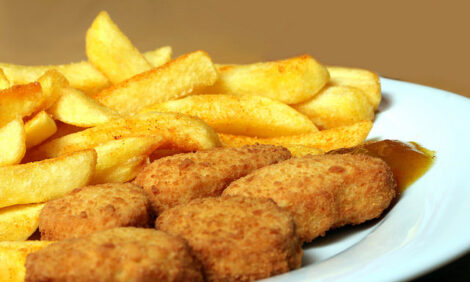



Excessive Brine in Chicken May Pose Health Risk
SOUTH AFRICA - Some of the chicken sold in South Africa has excessive amounts of brine, which could pose serious health risks for consumers due to its high salt content, according to the Department of Agriculture, Forestry and Fisheries.The government is taking steps to reduce the addition of brine, reports BusinessDay. The Department of Agriculture, Forestry and Fisheries has drafted changes to the Agricultural Product Standards Act aimed at reducing the total weight of brine in chicken to 4 per cent.
Association of Meat Importers and Exporters of SA CEO David Wolpert says the levels of brine injected into poultry in South Africa are as high as 30 per cent.
Brine is a salt solution often used to preserve vegetables, meat or fish. In the past it was used in the poultry industry to bring chicken to the right temperature. Now it is used to enhance the flavour and texture of chicken, local producers say.
There is no legislation controlling the percentage of brine in chicken. Many countries prohibit it and the US allows just 12 per cent.
Frozen chicken accounts for about 90 per cent of the local market, making brining a more important process in South Africa than in some other countries. Individually quick-frozen products such as frozen chicken portions make up about 60 per cent of total retail chicken sales.
"We have no problem with the principle, providing that there is added value to the consumer, but we believe the current level of injection is excessive, and is effectively supplying consumers with expensive water instead of cheap chicken," Mr Wolpert said.
"Where brining does occur internationally, percentages are normally limited to single digits."
South African Poultry Association CEO Kevin Lovell said there was no universal practice for brine injection. "Many countries do inject and some (many) do not. It is a question of what is appropriate and what is safe. Consumers must be made aware of what they are buying."
South Africa and many other countries brined products as moisture was lost through the freezing and thawing process, he said.
Portions lost more moisture than whole birds, so more moisture had to be added to make sure the taste and texture of frozen chicken was the same as that of chilled chicken.
Injection levels of 15 to 20 per cent were enough for acceptable taste and texture for portions, and less for whole birds.
Mr Lovell said injected chicken was more cost-effective and contained more protein per rand than chilled, unfrozen portions.
"Brined chicken portions contain less than a quarter of the amount of salt than a standard loaf of bread per 100g," he said.
The department’s figure of 4 per cent came from old techniques involving spin-chilling whole chickens, in which 8 per cent of weight is picked up as water. Through the production process about half of that moisture would be lost before packing.
There was a public outcry in December 2010 about the high levels of brine in chicken sold in retail stores. At the time, the Department of Trade and Industry said it was more concerned with consumer safety and welfare, and wanted to ensure consumers would be able to make informed buying decisions.
The preliminary results of a study by the Department of Agriculture, Forestry and Fisheries found there were high sodium concentrations in local chicken, which presented health risks, and the department called for a review of legislation.








